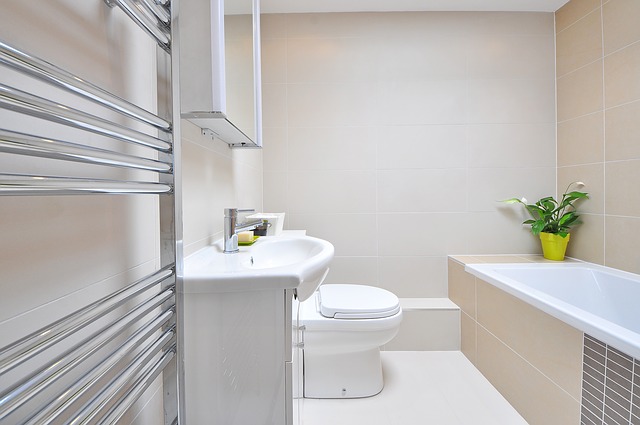Sanitaryware
The term ‘sanitaryware’ or ‘sanitary ware’ is a slightly ambiguous one that in very general terms refers to sanitary appliances found in installations, such as toilets and bathrooms.
In its narrowest sense, it can be taken to refer to WC bowls, cisterns, bidets, urinals, and washbasins (and sometimes sewerage pipes), that have traditionally been manufactured from porcelain (a ceramic material made from clay that might be described as 'vitreous china' when coated with enamel). This might be referred to as ceramic, porcelain or china sanitary ware, and is often white.
However, sanitary appliances are now made from a wide range of materials, including metals, acrylics, glass, and so on, and ‘sanitaryware’ is sometimes now interpreted to include a wider range of appliances that might be found in sanitary installations such as baths, showers, bins, incinerators, macerators, and so on.
NB: The Building Regulations Approved Document G: Sanitation, hot water safety and water efficiency suggests that the term ‘sanitary appliance’ means a ‘… WC, urinal, bath, shower, washbasin, sink, bidet and drinking fountain. It also includes appliances that are not connected to a water supply (e.g. composting toilet) or drain (e.g. waterless urinal).’
[edit] Related articles on Designing Buildings
- Approved Document G.
- Approved Document H.
- Bath.
- Bathroom definition.
- Bidet.
- Comparing porcelain and ceramic tiles.
- Drinking fountain.
- Earth closet.
- ECA Water Scheme.
- Installed level access shower.
- Lavatorium.
- Lavatory.
- Passive water efficiency measures.
- Porcelain.
- Secondary ventilation stacks in tall buildings.
- Septic tank.
- Sanitary accommodation.
- Sanitary pipework.
- Shower.
- Sink.
- Splashback.
- Solid surface wash troughs.
- Tiles.
- Types of sanitary appliances.
- Urinal.
- Wall hung toilet.
- Water closet.
- Wet room.
Featured articles and news
RTPI leader to become new CIOB Chief Executive Officer
Dr Victoria Hills MRTPI, FICE to take over after Caroline Gumble’s departure.
Social and affordable housing, a long term plan for delivery
The “Delivering a Decade of Renewal for Social and Affordable Housing” strategy sets out future path.
A change to adoptive architecture
Effects of global weather warming on architectural detailing, material choice and human interaction.
The proposed publicly owned and backed subsidiary of Homes England, to facilitate new homes.
How big is the problem and what can we do to mitigate the effects?
Overheating guidance and tools for building designers
A number of cool guides to help with the heat.
The UK's Modern Industrial Strategy: A 10 year plan
Previous consultation criticism, current key elements and general support with some persisting reservations.
Building Safety Regulator reforms
New roles, new staff and a new fast track service pave the way for a single construction regulator.
Architectural Technologist CPDs and Communications
CIAT CPD… and how you can do it!
Cooling centres and cool spaces
Managing extreme heat in cities by directing the public to places for heat stress relief and water sources.
Winter gardens: A brief history and warm variations
Extending the season with glass in different forms and terms.
Restoring Great Yarmouth's Winter Gardens
Transforming one of the least sustainable constructions imaginable.
Construction Skills Mission Board launch sector drive
Newly formed government and industry collaboration set strategy for recruiting an additional 100,000 construction workers a year.
New Architects Code comes into effect in September 2025
ARB Architects Code of Conduct and Practice available with ongoing consultation regarding guidance.
Welsh Skills Body (Medr) launches ambitious plan
The new skills body brings together funding and regulation of tertiary education and research for the devolved nation.
Paul Gandy FCIOB announced as next CIOB President
Former Tilbury Douglas CEO takes helm.
UK Infrastructure: A 10 Year Strategy. In brief with reactions
With the National Infrastructure and Service Transformation Authority (NISTA).























